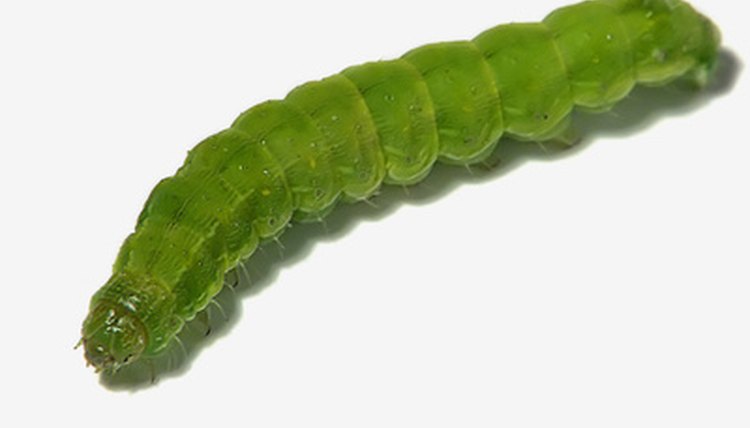Inchworm Identification

Inchworms got their name because their average size is about an inch. Because of its name, it is often assumed that an inchworm is a worm, but it is really a caterpillar since it comes from moth larvae. There are many different kinds of inchworms, with some distinct similarities and differences.
Things to Look For
All inchworms are about an inch long, with smooth bodies. They are usually of earth-tone colors such as brown, dark green, bright green and black. When trying to identify an inchworm, it is helpful to look at where it lives, what it eats, what damage it has done and how many pairs of legs it has in front and back.
Eastern Tent Caterpillar
According to asktheexaminator.com, the eastern tent caterpillar is known as one of the most destructive inchworms because they can kill a tree in a single season if enough of them are present. The eastern tent caterpillar will make a cocoon within the tree that looks much like a spider web, but in a cone shape. They use this cocoon to keep themselves safe from predators while eating and destroying the leaves within the cocoon.
Cankerworms
Cankerworms are much like the eastern tent caterpillar in that they have the ability to make thin delicate lines made of silk. They use this ability to escape from predators, instead of building cocoons. Cankerworms have stripes on their body and can vary in color. These inchworms like to inhabit trees, especially fruit trees. They feed off of the tree's leaves and can cause serious damage to the trees if they are present in great numbers.
Loopers
Loopers are more commonly known as measuring worms or span worms, according to allaboutworms.com. They have three pairs of legs in front and two to three appendages or prologs in back. Loopers move by scooting their back legs forward lunging forward, so their abdomen is sticking up in the air, while the front legs are still on the ground.
Development
Inchworms develop into geometer moths (in the Geometridae family). An adult geometer moth has a wingspan of 3/8 inch to 2 inches. Most are gray or brown and have numerous colored spots or patterns on their wings and blend into the bark and branches of trees.
